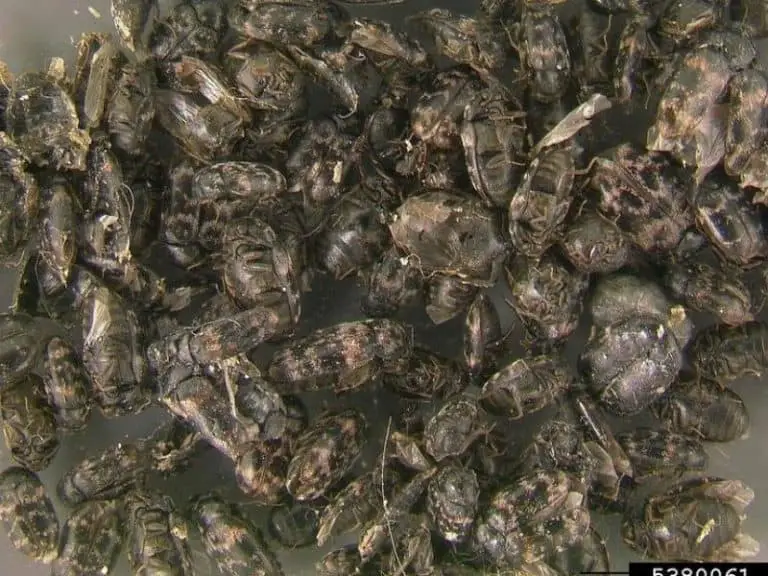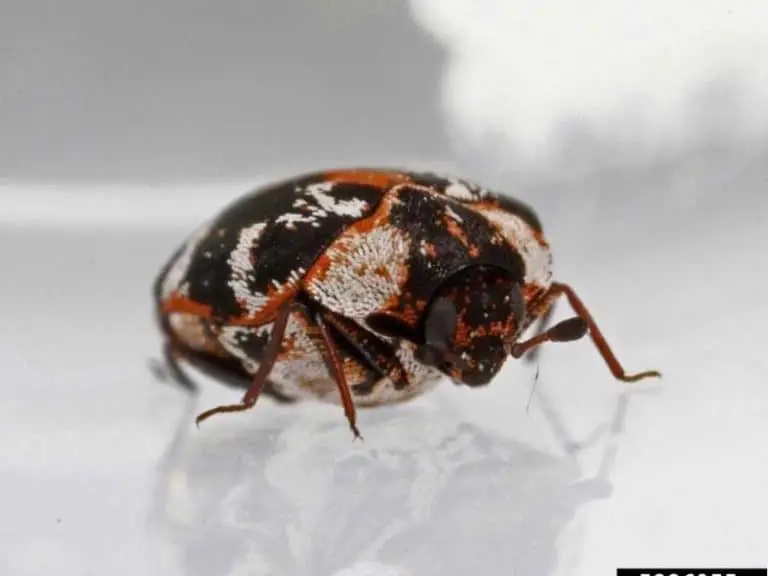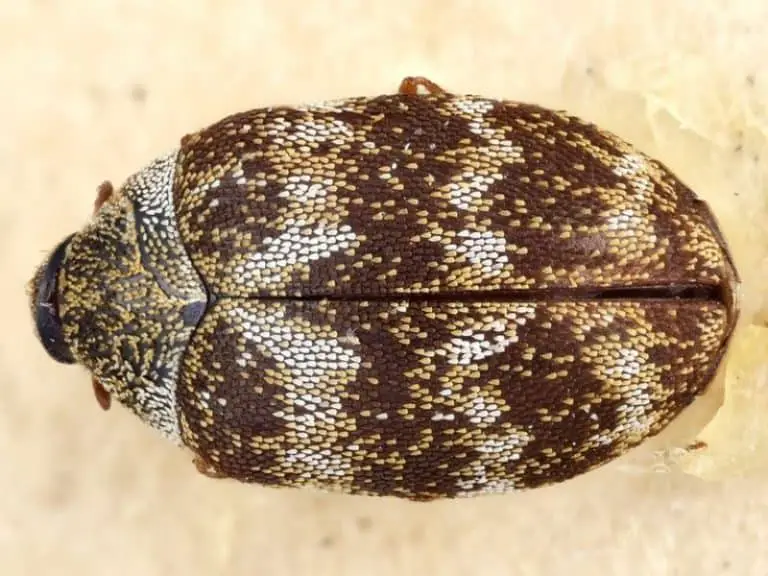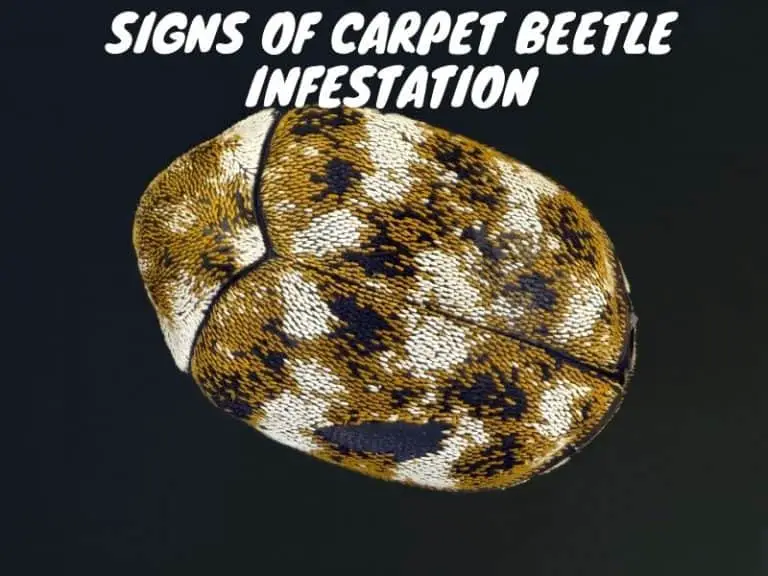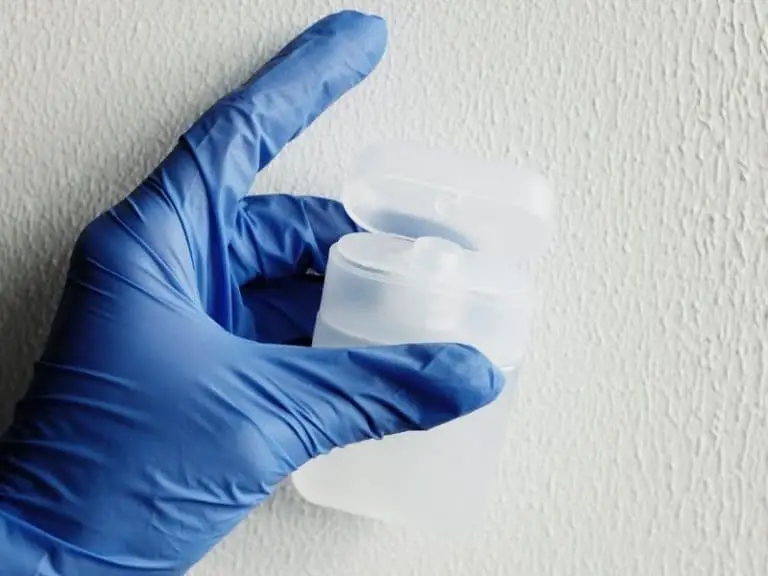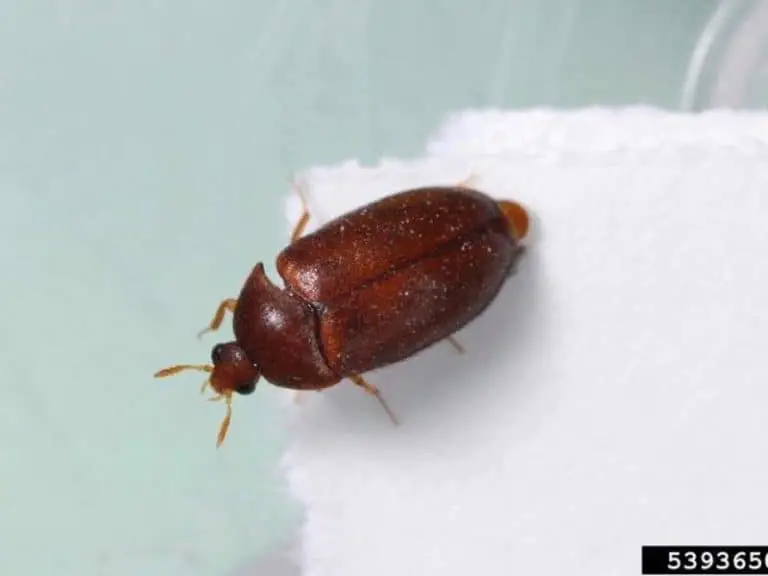Carpet Beetles Under Your Skin: Horror Movie Or Real Possibility?
When late spring or early summer strikes, carpet beetles show up. These creepy crawlers, adults and larvae alike, are smaller than bed bugs, but they can cause marks on the skin similar to bed bug bites. Since they can leave holes in clothes, bed sheets and carpets, some people wonder, “can carpet beetles get under your skin?”
Carpet beetles cannot get under the skin. However, they can digest keratin, a type of protein that protects the hair, which is a part of their diet. Carpet beetles eat hair on body parts like the head, chin, armpits, legs, and groin. They also eat clothes, carpets, and others with natural fibers.
You may have carpet beetles in your home if you have bed bug bite-like marks on your skin, and there are holes in just about anything that’s out of natural fibers.
But before you panic, continue reading. Below you will come across some important matters that you need to know about carpet beetles.
Feel free to share this on social media upon reaching its end to let your family members and friends get acquainted with carpet beetles, too. When it comes to dealing with tiny pests, knowledge is power!
Larvae Carpet Beetles are the Enemies
First things first: There are a couple of carpet beetle types that you may encounter when it’s their season. They are adult and larvae carpet beetles.
However, only one of them can negatively affect your life more by leaving unsightly holes in your belongings and causing signs and symptoms similar to an allergy attack.
Adult carpet beetles have wings that enable them to fly inside your home through open windows and doors easily. Once inside, female ones may lay their eggs on various surfaces and furniture.
Just because your windows and doors are closed all the time doesn’t necessarily mean that adult carpet beetles won’t be able to get inside.
Just like those bloodsucking bed bugs, you can also introduce some carpet beetles, adults and baby ones alike, into your home by means of secondhand pieces of furniture that are infested with them.
The good news is that adult carpet beetles are likely to head out as soon as they have laid some eggs indoors. That’s because pollen or nectar is the only food on their diet.
Young carpet beetles, on the other hand, are likely to remain indoors until such time that they have grown wings and can fly outside to hunt for some pollen or nectar.
That’s because their diet is composed of nothing but natural fibers, which are present abundantly inside your home — clothes, bedsheets, carpets, and many others!
What’s more, larvae carpet beetles can also cause what’s called “carpet beetle dermatitis”, which we will talk about in a few, so don’t stop reading now if you want to know more about this serious matter.
This doesn’t mean, however, that you should no longer consider adult carpet beetles as enemies.
Always keep in mind that young carpet beetles, the ones that can wreak havoc on your life, came from eggs that were laid by adult female carpet beetles.
Needless to say, you should deal with both adult and larvae carpet beetles.
Baby Carpet Beetles’ Diet: Natural Fibers
So, can carpet beetles get under your skin? They cannot, especially young ones.
Well, even if their teeth are strong enough to create holes in your skin, they won’t bite you to burrow in your skin because, unlike bed bugs, carpet beetles do not find human blood delicious. Natural fibers are the only ones that their taste buds prefer.
Wool, cotton, silk, feather, fur — these are what make the mouths of larvae carpet beetles fill with saliva. They also like leather, which is why it is likely for them to also gnaw on leather bags and shoes.
The main reason why a lot of people hate having carpet beetles around is that they tend to damage clothes, bed sheets, carpets, curtains and others that are made of natural fiber.
They may also feed on items that are out of synthetic fibers mixed with all-natural ones.
Young carpet beetles love feasting on natural fibers because they contain keratin. Put simply, keratin is a protein type whose primary function is to offer some sort of protection.
Larvae carpet beetles can easily digest it, while other animals can’t, and this is why natural fibers are not part of their diet.
Does the name ring a bell?
Well, it’s because keratin is the hard outer layer of the shaft of your hair. It’s due to this why baby carpet beetles may also end up on your head, usually while you’re asleep, to eat your mane!
Other than the head, larvae carpet beetles may also wind up on other body parts like the:
- Chin. Men most especially are prone to harboring baby carpet beetles on the chin because of their beard. Carpet beetles, in particular young ones, may also feast on other facial hair.
- Armpits. If you are a woman and there are young carpet beetles in your bedroom, you may end up having a handful of them in your underarms if you forget to shave.
- Chest. Are you a man with lots of chest hair? Then make sure that you deal with a carpet beetle infestation right away, especially if the thought of having little carpet beetles on your chest terrifies you.
- Legs. Whether you are a man or a woman (particularly someone who fails to eliminate excess body hair), your legs may serve as a playground for larvae carpet beetles.
- Groin. If you believe that pubic lice or crabs are the only ones that can thrive in your groin area, think again — the pubic area may also serve as a buffet table for young carpet beetles!
The problem with young carpet beetles ending up in the areas mentioned above is that they can cause unfavorable signs and symptoms on the skin that they crawl on to get to body parts where there’s hair to devour.
All About Carpet Beetle Dermatitis
Do carpet beetles burrow in your skin? No, they don’t. They don’t bite you either because they are not interested in your blood. However, you may notice marks on your skin that closely resemble bed bug bites.
Because of this, many people immediately assume that a bed bug infestation is the problem even though there is not one single bed bug around.
Those are not bite marks. Instead, they are the skin’s reaction to the body of larvae carpet beetles, which is covered with tiny hair.
The allergic reaction from coming into contact with baby carpet beetles is referred to as carpet beetle dermatitis. It is often mistaken for bed bug bites and a few other skin issues.
Some of the common signs and symptoms of carpet beetle dermatitis are:
- Rashes
- Itchiness
- Burning sensation
- Red, watery eyes
In rare instances, carpet beetle dermatitis can cause breathing difficulties, too, which need emergency care. Scratching the affected areas is a no-no because you may break your skin.
When that happens, bacteria may invade the broken skin, causing an infection that may require treatment and lead to nasty scarring.
Just in case you develop carpet beetle dermatitis, here are some of the steps that you may take:
- Clean the problem areas with a mild cleanser.
- Apply a cold compress to alleviate redness and itchiness.
- Count on your trusted anti-itch lotion or steroid cream.
- Pay the nearest dermatologist a visit.
Other than dealing with the signs and symptoms, it’s also a must to take care of the root cause of the problem: carpet beetles. For this, you may give a try some home remedies for those creepy crawlers.
You may also get in touch with professional exterminators in your area to conduct an inspection and provide treatment, too.
Just Before You Hunt Down Carpet Beetles On Your Skin
Unlike bed bugs, carpet beetles do not drink blood. This means that it is unlikely for them to bite you. It’s exactly because of this why they can’t get under your skin, although they may eat your hair.
However, carpet beetles, particularly young ones, can get on your nerves.
It’s because they can nibble on clothes, carpets, and others that have natural fibers in them, leaving them with holes and rendering them pretty much useless.
Larvae carpet beetles may also cause what’s called carpet beetle dermatitis in some people.
Related Questions
Can carpet beetles crawl into the ears?
Because larvae carpet beetles nibble on hair at night, they may end up inside the ears. However, according to health authorities, reported cases of young carpet beetles crawling into the ears were completely accidental.
Do carpet beetles spread diseases?
Because carpet beetles do not bite humans, they cannot transmit diseases through their bites. However, their bodies may have microbes on them, which they may spread by crawling. Some of those microbes may cause diseases.
Photo credit: ©canva.com/alelsejsarifulin
Medical Disclaimer: TheHomePestControl is a digital publisher and does not offer personal health or medical advice. The contents of this website are not intended to substitute for professional medical advice, diagnosis, or treatment.
Affiliate Disclaimer: As an Amazon Associate, I earn from qualifying purchases made on our website. If you make a purchase through links from this website, I may earn a commission at no additional cost to you.

